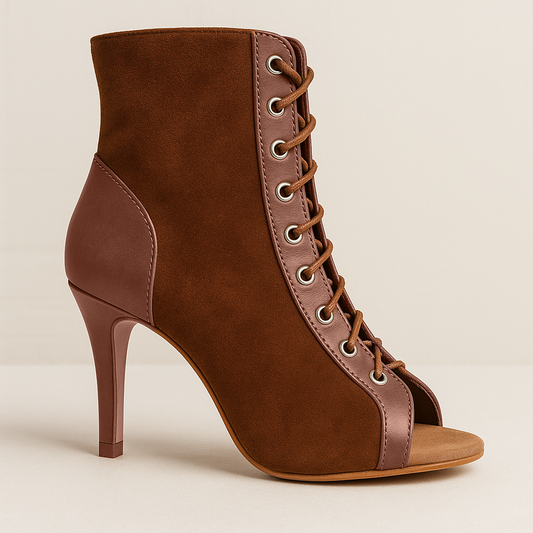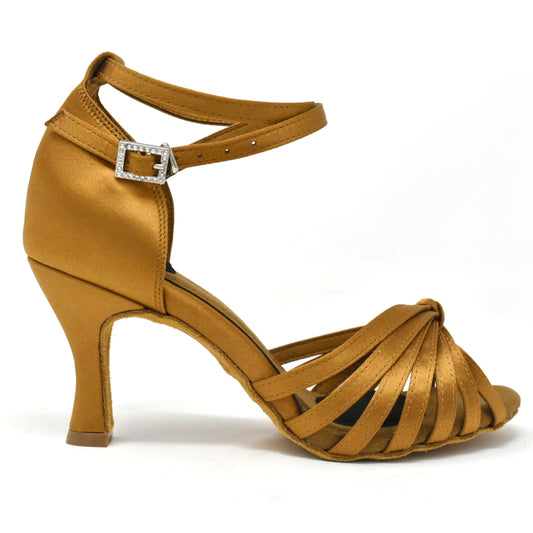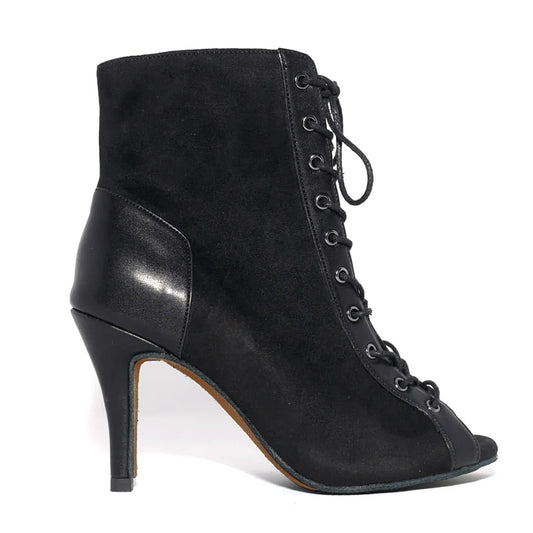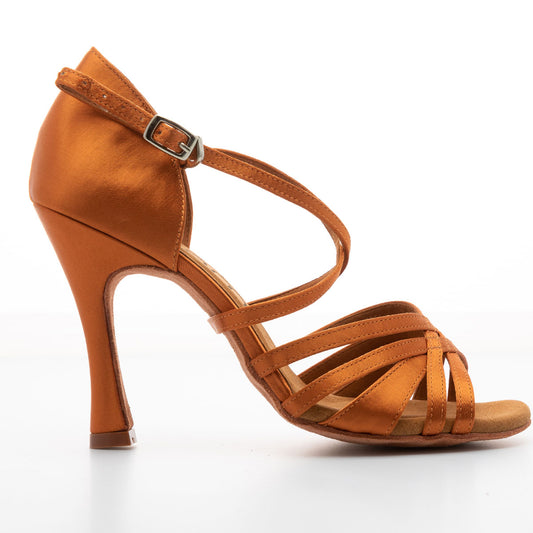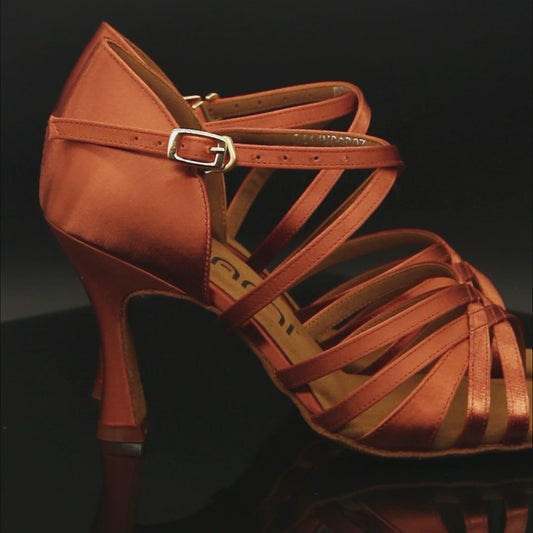
Our social dance shoes look like your regular heels, but instead of the usual stiff soles, these have flexible suede or microfiber soles. Why do Latin dance shoes have a suede sole, and why is this feature important?
Types of Latin Dance Shoe Soles

Suede Leather: This material is traditionally used for dance shoes. The suede material is thin and flexible. It has natural fibers called naps, that adhere to the dance floor, allowing the dancer to make gravity-defying turns without slipping.
Microfiber Material: This material is used as an animal-friendly alternative to suede leather. Like suede leather, microfiber has a textured surface that grips the floor, allowing the dancers to glide, slide, and spin without missing a beat.
Rubber: The rubber material sticks to the dance surface, allowing you to dance without slipping. We offer a range of styles that come with our signature “street dance soles.” These social dance shoes could be worn on the dance floor and beyond.
Other materials: Lambskin, nubuck, and other materials are also used as dance shoe soles. Depending on the material, some might be harder to maintain than others. Lambskin, for instance, can be quite thin and delicate.
Here at Yami Dance Shoes, most of our products feature microfiber soles and a small selection of leather shoes with suede soles. We love working with microfiber and vegan leather because these are cruelty-free materials and are less likely to lose their shape over time.
Why Latin Social Dance Shoes have Suede Soles

Traction on the Dance Floor
Regular heels are not ideal for dancing because one the wrong move and you could sprain your ankles. Suede soles have naps or fibers that give the proper grip on smooth surfaces. Dancing on a smooth surface is downright challenging, especially if you’re not used to wearing heels. The suede soles provide the right traction for dancing to keep you perfectly balanced with every step.
Ideal for Spinning
The suede soles are ideal for gliding, sliding, and spinning. With a pair of Latin dance shoes, you can make those tight turns and perform gravity-defying footwork on the dance floor with ease.
Flexibility
Regular shoes have stiff soles that make dancing extremely difficult. And when you’re into Latin dance, it will be hard to point the toes because the soles do not have a lot of give. Flexible materials are a must when dancing because the give lets you change your weight quickly as you move around. With a full range of movement in your feet, you can perform high-quality dancing.
Suede Sole Maintenance
When you’re dancing, the suede soles will pick up dirt, which turns into grime that builds up on the soles’ surface. The gunk will become slippery as the suede naps smoothen over time. Eventually, the shoes will be so dirty; they become too slippery!
To remove the grime buildup, you have to brush your shoes regularly. Any kind of dense, wire shoe brush will do. The brushing eliminates gunk while also refreshing the naps of the suede soles.
You have to brush your shoes after every wear. Brush the soles in quick strokes from the center and then outwards. Most of the gunk is concentrated on the balls of the feet so put more pressure on this area while brushing, but don't press too hard to avoid rips. Alternate the direction of the brushing to restore the naps.
If you don’t have time to clean the suede soles, try wiping them with a damp cloth. This helps prevent sliding by giving the suede soles a better grip. The effect is temporary, and regular brushing remains the best way to restore the suede soles.
If the suede soles have become too worn out, brushing no longer cuts it, sends your shoes to a cobbler, and has them replaced with new soles.
Suede and microfiber soles help enhance your performance on the dance floor, but these are very delicate materials that require regular maintenance. We hope that these tips will prolong the life of your Yami social dance shoes!

